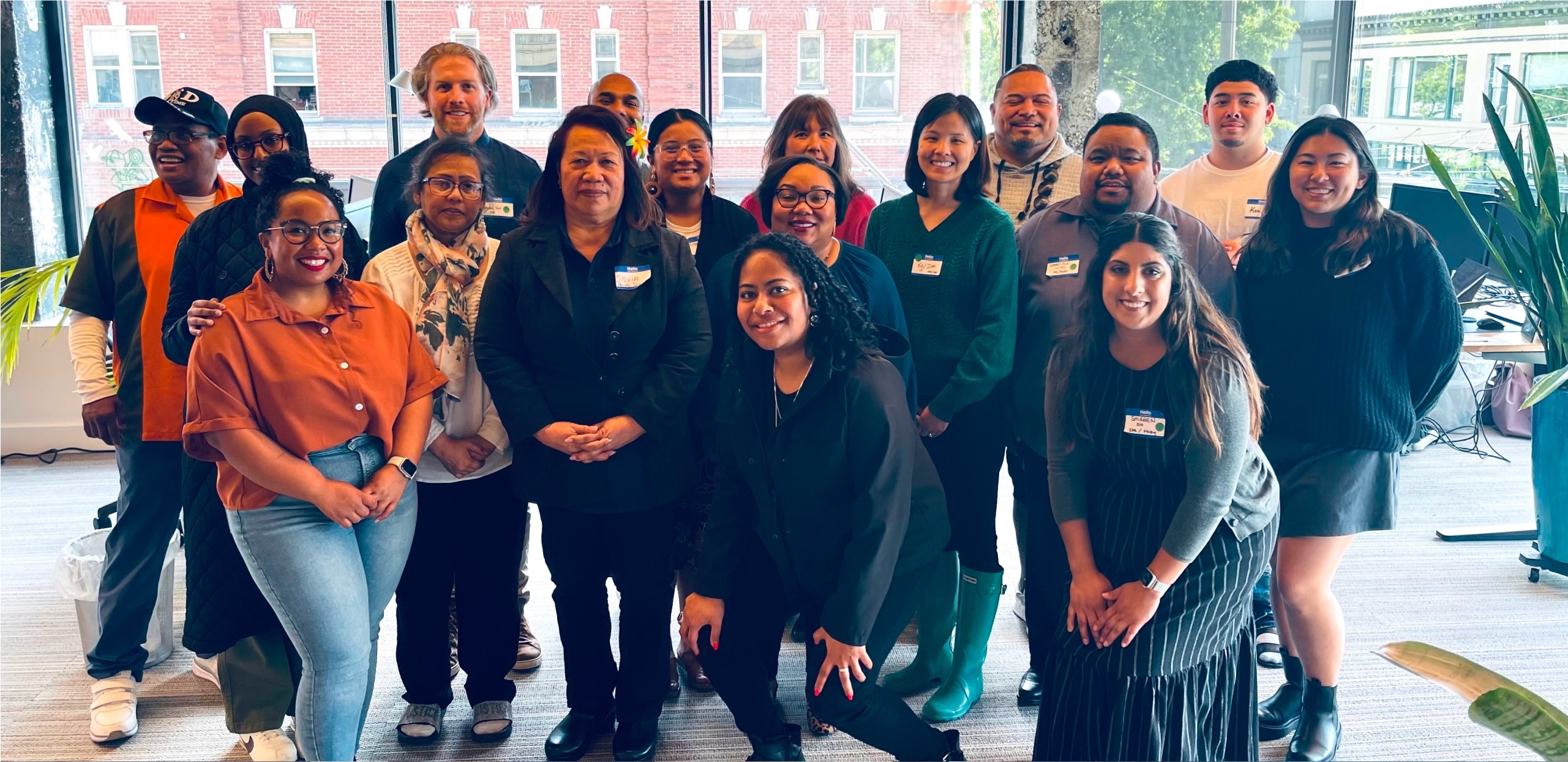Community partners from organizations serving Native Hawaiian and Pacific Islander communities pose for a photo with Washington State Department of Health and DH team members in our Seattle office. They gathered in April to talk about community-driven outreach.
The demand for audiences’ attention is higher today than ever before. To get noticed, messages must meaningfully engage people and reflect the communities they belong to and identify with. Relying on traditional media channels alone is no longer enough.
Community media (also known as community-based media) is often overlooked in favor of mass media, yet it holds the power to create authentic connections with diverse audiences, especially those who have been excluded or underrepresented. These channels are rooted in specific cultures, languages and identities and offer unique opportunities to engage audiences on a deeper level.
Understanding community media
Community media comes in many formats — from in-language newspapers to grassroots social media pages — with content especially created to meet the needs and interests of specific groups. For that very reason, these channels command outsized influence and credibility among audiences. They don’t just share information; they shape their communities’ cultures, norms and dialogues.
The importance of connection (and it’s all about connection)
By sharing stories that match audiences’ lived experiences, community media serves as a cultural anchor. Whether through video and radio shows, podcasts or in-language newsletters, these outlets create authentic connections and cultivate a sense of belonging that preserves and celebrates diverse identities.
Inclusivity and visibility
Engaging with community media is not just about expanding your reach. It’s about demonstrating a genuine commitment to inclusivity. When you support diverse voices and perspectives, you’re sending a signal that says: “You matter.” And in so doing, you ensure the messages, services or resources you’re advertising help bridge gaps and overcome barriers for your audiences. You are showing your audiences that you are for them.
Practical tips for success
Ready to integrate community-based media into your communications strategy? Here are some actionable tips to guide you:
Uncover unique channels. Take the time to explore the diverse community media outlets your audiences know and trust. Look out for unconventional channels that resonate with specific communities or that they depend on — like private WeChat, Viber or Facebook groups. Ask community leaders about any new channels or pilot programs (a podcast launched by a newspaper, for example). Lastly, seek out channels that feel culturally significant by asking audience members: “What channels help you feel connected to the communities you belong to?”
Build a list. Organize your community media outlets, relationships and contacts in an accessible and sortable list. Track attributes like languages, community identifiers, topics or issues covered, and regions served in addition to distribution, publication and media buying information.
Invest in relationships. Building authentic connections with community media outlets is paramount. Approach them as partners rather than transactional contacts. Invest time to understand their audiences and values.
Ensure cultural relevance and language accessibility. Prioritize language accessibility by providing translated content that resonates with diverse audiences. Collaborate closely with community media organizations to ensure your content is relatable and culturally appropriate.
Connect people to experts. Offer access to sources, like subject-matter experts, who can enrich community media content. Connecting creators to interviewees is a win-win. You help form new relationships and ensure audiences hear the right messages from the right people.
Personalize the issue. Work collaboratively with community media to uncover unique angles that resonate with cultural audiences. Tailor messaging to address community interests and concerns. Bring data about how an issue is affecting their specific community in addition to broader statistics, or connect your issue to an upcoming event or celebration (for example, Pride, Lunar New Year, Ramadan, etc.).
Supply media and resources. Community media outlets don’t typically have the infrastructure mainstream outlets do. Help them accelerate the content-creation process by supplying photos, graphics and toolkits. By going the extra mile to offer turnkey resources, you not only ensure your message is well-received by audiences, but you also demonstrate your commitment to supporting community-based work.
Ensure early notification. Communicate information to your community media partners promptly. Often, mainstream media outlets are the first to know and community media is an afterthought. Include community media in press release distributions and offer translated content from the outset. Doing so shows you understand and respect the role they play in their communities.
Bring people together. Connect the community media outlets in your network to one another and convene conversations around shared goals or issues. Host a networking event, an open house, or a webinar to create space for people to gather, learn, access resources and identify potential partners for future collaboration.
Seek feedback. Stay open to and regularly solicit feedback from community media partners. Refine your approach based on what they tell you. When partners see that you listen to their insights and incorporate their suggestions, you build trust and get better results over time.
At DH, we believe in the power of equity-centered communications, which prioritizes inclusivity, accessibility and authenticity. Embracing community-based media will undoubtedly expand your reach. More importantly, though, it will help you build authentic connections and invest in community infrastructure. By integrating community media into your communications practices, you can amplify your impact and foster stronger, more inclusive and more meaningful relationships with communities and audiences alike.
For an example of a successful community media outreach program, check out results and insights from DOH’s COVID-19 Community Media Outreach (CMO) program.

